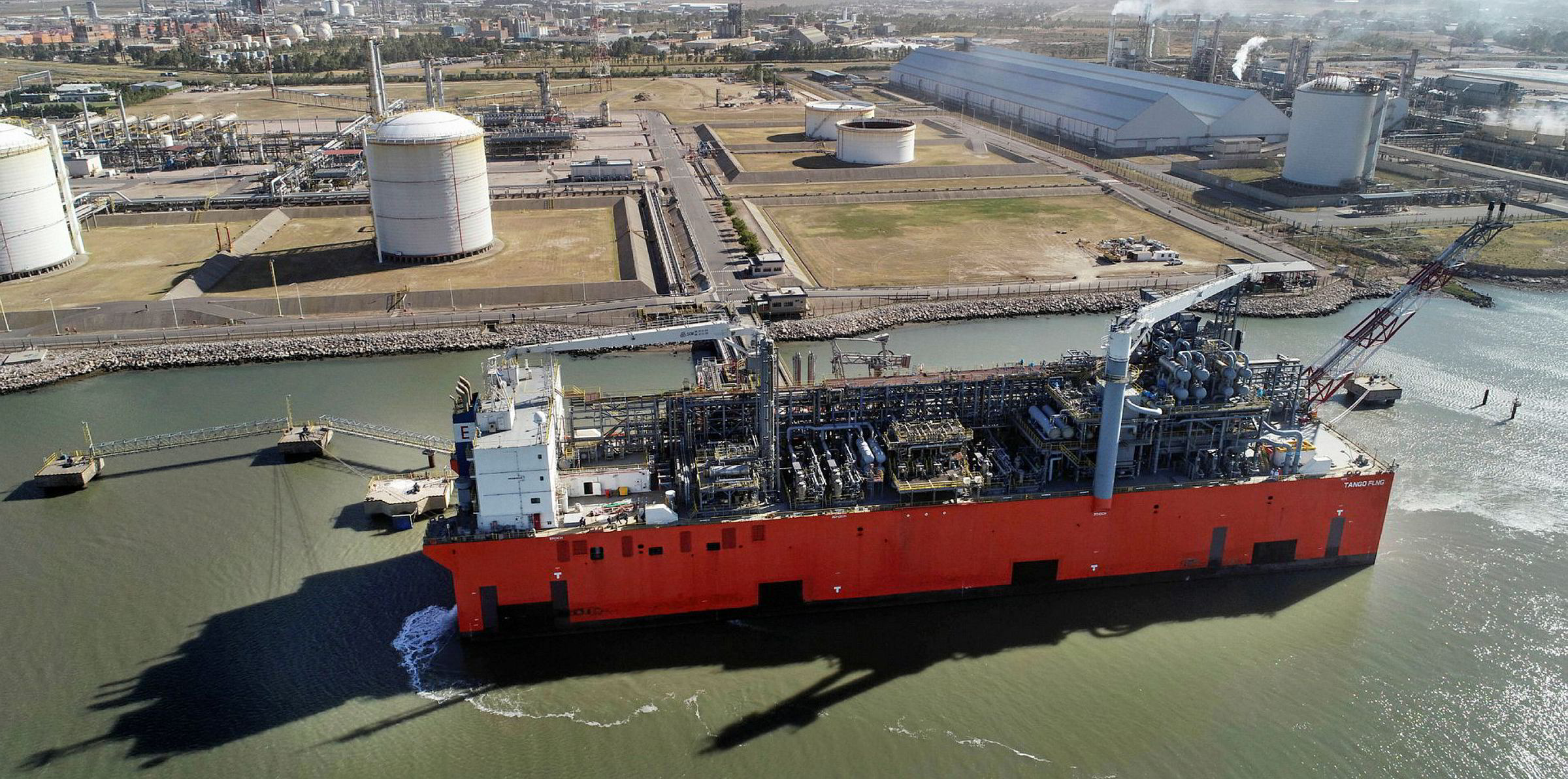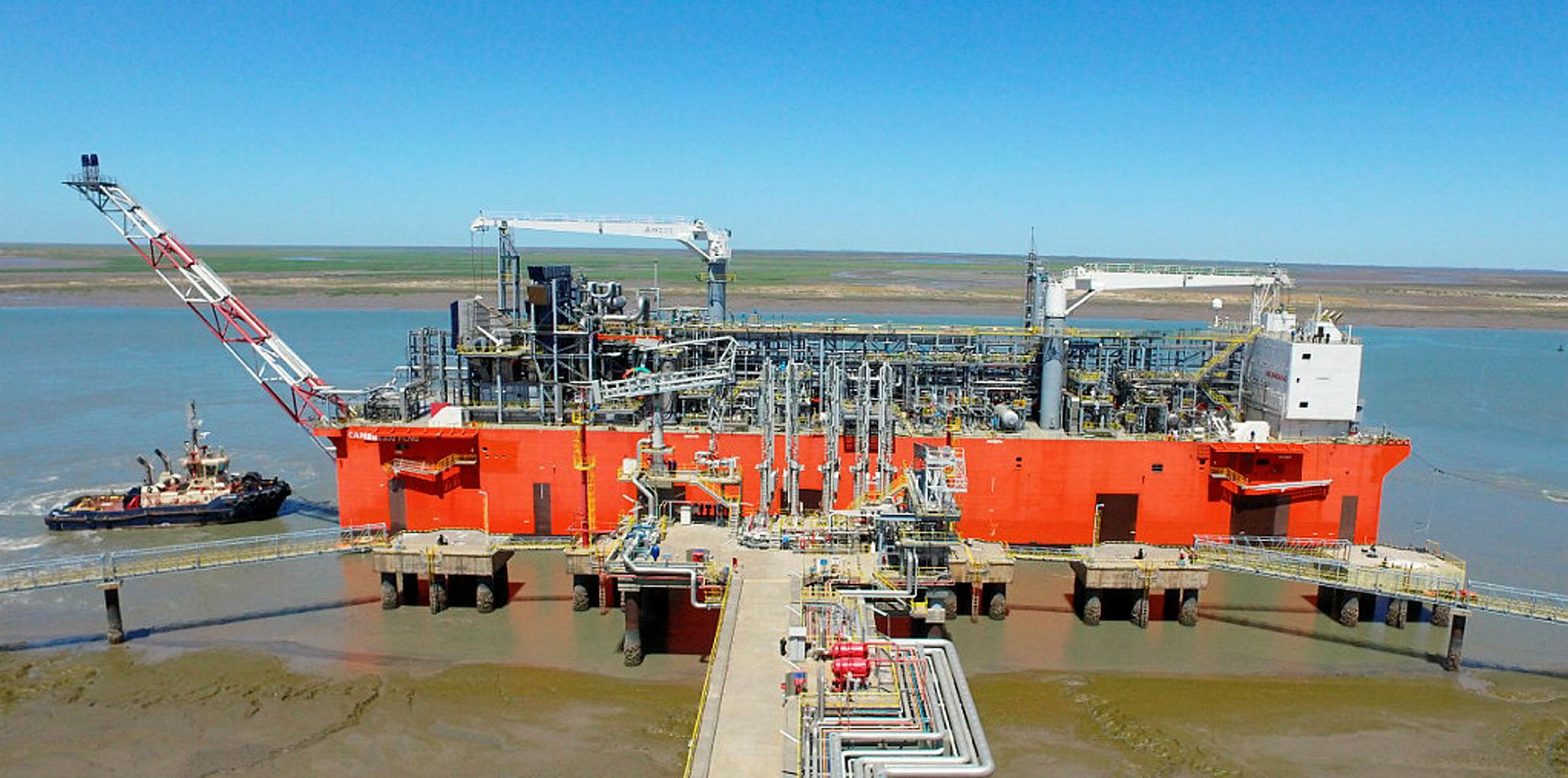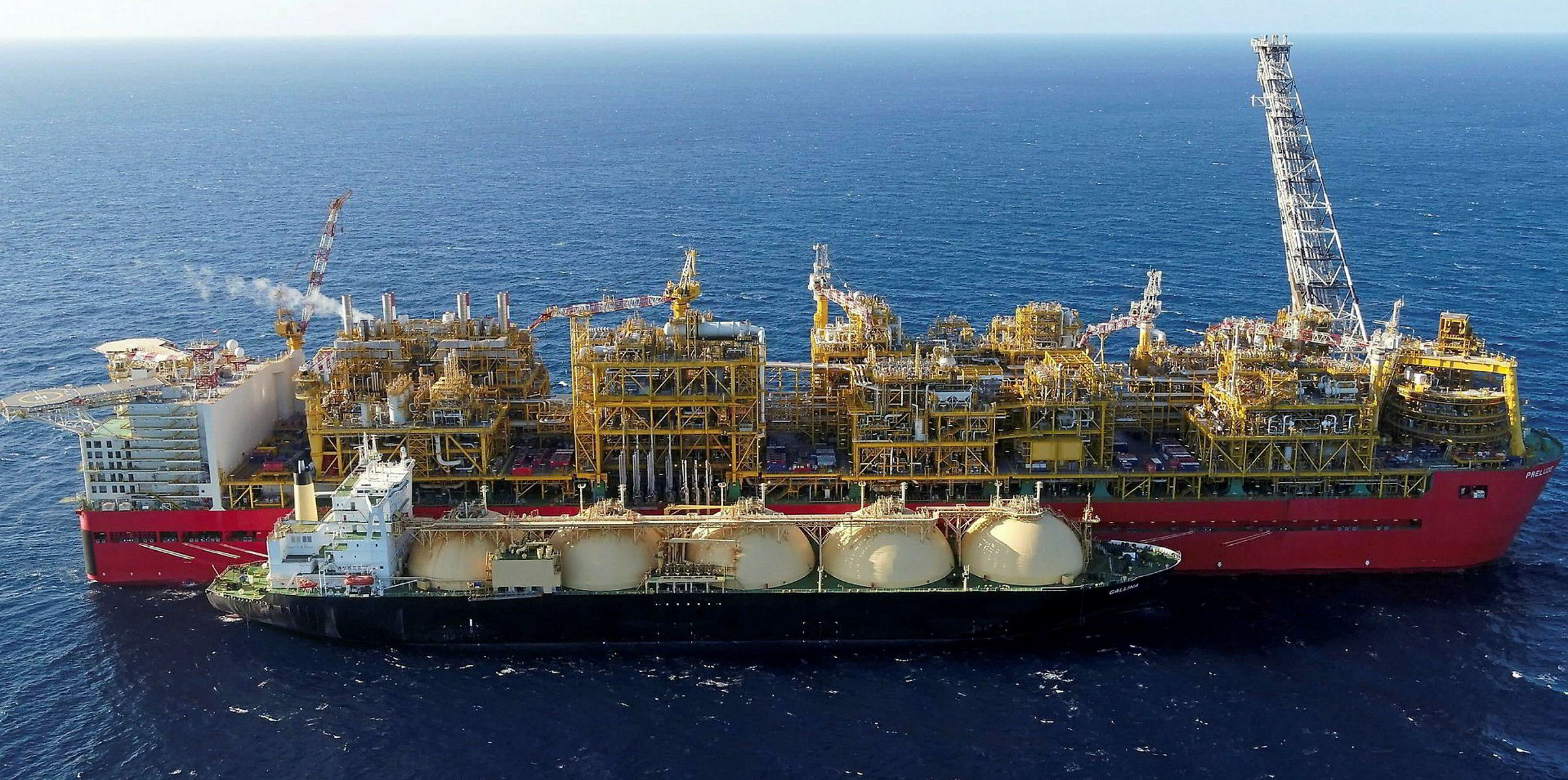Argentina’s YPF is in the market to hire an LNG carrier as it gears up to begin commercial operations from chartered floating LNG production unit Tango FLNG.
Owners and brokers said YPF is seeking a ship of about 138,000 cbm or larger to charter for nine months.
The company wants to take delivery of the vessel by August, which chimes with the September start-up of its 10-year tolling agreement with Exmar on the 0.5 million tonne per annum, barge-based FLNG unit.
Those following the business say that the LNG carrier employed may spend long periods waiting alongside Tango FLNG or in Bahia Blanca, where the unit is moored until sufficient LNG has been produced. The floater has 16,100 cbm of onboard storage capacity.
LNG production capacity: 500,000 tonnes per annum
LNG storage: 16,100 cbm
Storage tanks: Type-C
Draught: 5.4 metres
LOA: 144 metres
Beam: 32 metres
Depth: 20 metres
Liquefaction technology: Black & Veatch Prico SMR
Shipbuilder: Wison Offshore & Marine
Small vessel
A requirement for a slightly smaller vessel than the 170,000-cbm to 180,000-cbm modern LNG carriers usually tendered for is likely to be of particular interest to owners of steam-turbine tonnage whose less-efficient, lower capacity vessels tend to attract the lower rate levels.
Tango FLNG exported its first cargo this month when the Cheniere Energy-chartered 147,895-cbm Fuji LNG (built 2004) sailed on 6 June with 25,000 cbm of LNG produced by the floater loaded into a single tank.
Fuji LNG has since called at Cheniere’s Sabine Pass LNG terminal in the US where its other tanks were due to be filled. The ship departed the US but the final discharge of the Argentinian volumes is unknown as yet.
Chinese-built Tango FLNG became the world’s third FLNG unit to be put into operation, pipping Shell’s 3.6-mtpa Prelude FLNG to the post by days.
Petronas’ PFLNG Satu, which this year was relocated to east Malaysia, and the Golar LNG and Perenco-controlled Hilli Episeyo off Cameroon comprise the other two existing LNG floaters.
All four floaters export their cargoes in side-by-side discharge operations using conventional LNG carriers.






